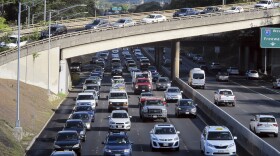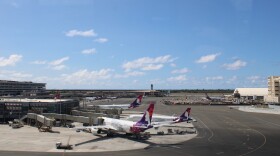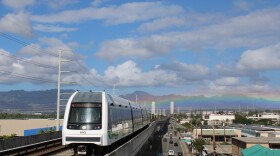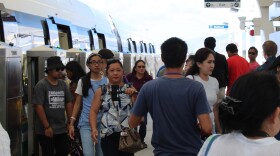-
Cities and states in the U.S. are turning to AI to improve road safety. Hawaiʻi is distributing 1,000 dashboard cameras to monitor road conditions and reduce traffic fatalities.
-
Military veterans 65 and older on Oʻahu will be given a $20 exemption from their annual vehicle registrations. Honolulu Mayor Rick Blangiardi has signed a bill that makes the exemption a city law. It will go into effect next July.
-
The Hawaiʻi Department of Transportation has requested a full waiver from the air traffic reduction at all Hawaiʻi airports. If it’s granted, the state says it will pay for the essential staff needed to maintain full flight schedules.
-
Hawaiʻi Tourism Authority’s Chief Administrative Officer David Uchiyama spoke to The Conversation’s Catherine Cruz about the potential cuts to flights at Honolulu's Daniel K. Inouye International Airport.
-
Daniel K. Inouye International Airport is on a list of 40 airports that have been ordered by the Federal Aviation Administration to cut 10 percent of their flights; The 442nd Regimental Combat Team is immortalized in the documentary "Defining Courage"
-
A new bill moving through the city council is trying to clean up the language in the city’s traffic code, which says that bikes are not allowed on sidewalks in business districts.
-
Segment 2 of Skyline is now open from Middle Street to Aloha Stadium, including the Daniel K. Inouye International Airport. HPR rode along and asked riders how they feel about the new addition.
-
The new segment of the Honolulu rail system opened Thursday morning, adding four new stops, including at the Daniel K. Inouye International Airport and Joint-Base Pearl Harbor Hickam.
-
Director of the Hawaiʻi Department of Transportation Ed Sniffen spoke to The Conversation's Catherine Cruz about the Skyline's second segment easing parking pressure and creating commercial opportunities in Honolulu's airport area.
-
Hawaiʻi Department of Transportation Director Ed Sniffen talks about opportunities around the new Skyline service to Honolulu International Airport; Community members and state officials say goodbye to the historic vessel Falls of Clyde, which is set to be scuttled 25 miles off Oʻahu's south shore
Play Live Radio
Next Up:
0:00
0:00
Available On Air Stations










